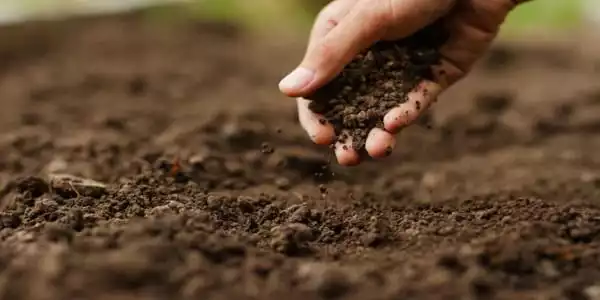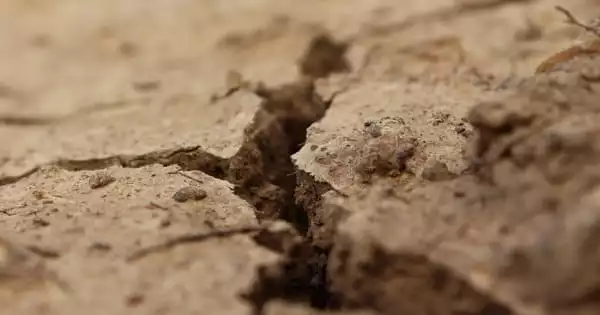The interaction effects of rising temperatures and a common livestock antibiotic on soil microbes were studied by community ecologists. Heat and antibiotics, the researchers discovered, disrupt soil microbial communities, reducing soil microbe efficiency, resilience to future stress, and ability to trap carbon.
Soils are home to diverse microbial communities that cycle nutrients, support agriculture, and trap carbon, all of which contribute to climate change mitigation. Soils contain approximately 80% of the Earth’s terrestrial carbon stores. This vital carbon sink is under threat as a result of climate change and other human activities that affect soil microorganisms.
Jane Lucas, a community ecologist at Cary Institute of Ecosystem Studies, led a new study that looked at the interactions between rising temperatures and a common livestock antibiotic on soil microbes. Heat and antibiotics, the researchers discovered, disrupt soil microbial communities, reducing soil microbe efficiency, resilience to future stress, and ability to trap carbon. The paper, which is now available online, will be published in the December issue of Soil Biology and Biochemistry.
Most soil health studies look at only one stressor at a time. We wanted to investigate the effects of both warming temperatures and antibiotics at the same time in order to get a sense of how two increasing stressors affect soils.
Jane Lucas, a community ecologist
According to Lucas, “Most soil health studies look at only one stressor at a time. We wanted to investigate the effects of both warming temperatures and antibiotics at the same time in order to get a sense of how two increasing stressors affect soils.”
Monensin was chosen because it is a common antibiotic whose use on cattle farms is increasing. Monensin is a low-cost, simple-to-administer medication that does not require a veterinary feed directive and is not used in human medications. Monensin, like many antibiotics, is poorly metabolized; much of the antibiotic remains biologically active when it enters the environment via animal waste.
The researchers collected prairie soil samples from preserved land in northern Idaho that was free of grazing livestock. The vegetation cover at the collection site, which is primarily tallgrass prairie, is typical livestock pasture, with no inputs from cattle waste.
Soil samples were treated with either a high, low, or no dose of the antibiotic before being heated at three different temperatures and incubated for 21 days. Temperatures (15, 20, and 30°C) tested represented seasonal variation as well as a future warming projection. The team measured soil respiration, acidity, microbial community composition and function, carbon and nitrogen cycling, and microbe interactions for each treatment.

They discovered that as the temperature increased and antibiotics were added, bacteria collapsed, allowing fungi to dominate and homogenize, resulting in fewer total microbes and less microbial diversity overall. Antibiotics by themselves increased bioavailable carbon while decreasing microbial efficiency. Rising temperatures increased soil respiration and dissolved organic carbon on their own. Increases in these labile carbon pools can reduce long-term carbon storage capacity.
“We saw real changes in soil microbe communities in both the low and high-dose additions,” Lucas says. Rising temperatures exacerbated antibiotic effects, resulting in distinct microbial communities emerging at each temperature tested. We found less diversity and fewer microorganisms overall in these assemblages. These changes may reduce soil resilience to future stress.
Heat and antibiotics also increased microbial respiration, reducing efficiency. In essence, microbes must work harder to survive in a hot, antibiotic-laden environment. This is analogous to how it is easier to walk a mile when the temperature is 70 degrees than it is to run a mile when the temperature is 95 degrees. Reduced microbial efficiency can lead to soils storing less carbon in the long run.”
As soil microbes work harder (and inefficiently) to process carbon, less is converted into a stable organic form that can be trapped in the soil. Instead, more carbon dioxide is released into the atmosphere as a gas. This effect has the potential to convert an important carbon sink into a carbon source, exacerbating the effects of climate change.
According to senior author Michael Strickland, an Associate Professor in the Department of Soil and Water Systems at the University of Idaho, “Environmental change forces do not operate in isolation. Heat alone, antibiotics alone, and heat and antibiotics together all have different effects on soil microbial communities, according to our findings. These findings emphasize the importance of testing multiple stressors at the same time in order to gain a better understanding of how our soils and the essential functions they perform are changing.”
Lucas concludes by saying, “This work is consistent with the ‘One Health’ philosophy. Agriculture, environmental protection, and public health are all inextricably linked. Understanding how multiple stressors shape soil microbes is critical for promoting soil health in the face of climate change. Things like soil carbon storage capacity and crop production may be jeopardized if we do not account for interactive effects. Limiting antibiotic inputs to the environment, in addition to broader climate mitigation efforts, could help protect soils.”





